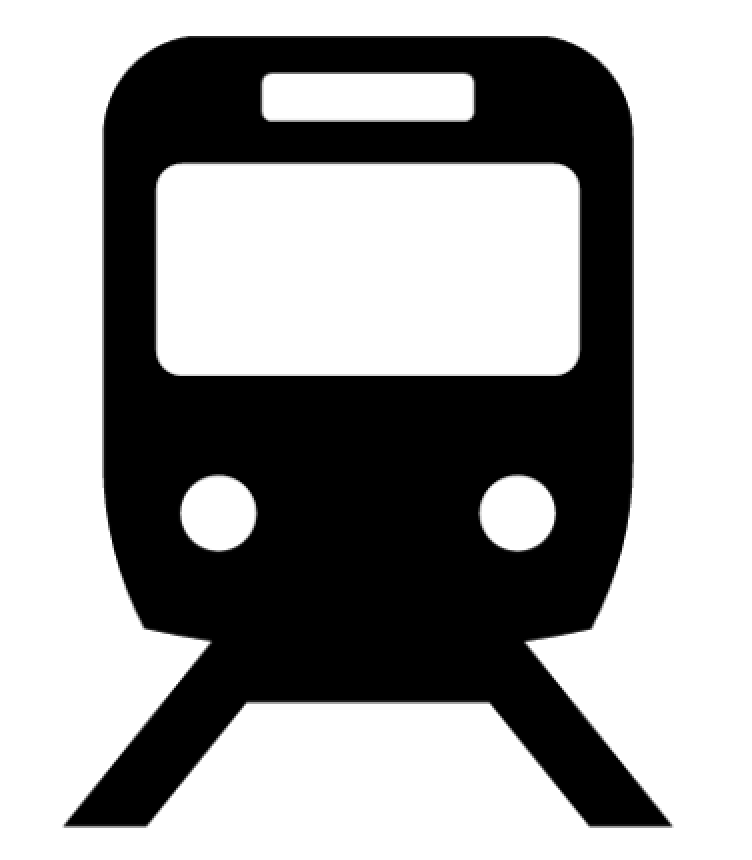|
grahame
|
 |
« on: December 21, 2019, 12:56:14 » |
|
From The Railway HubA target to make Britain’s railway stations fully accessible by 2030 is set to be missed by 40 years, according to a disability charity.
Leonard Cheshire claimed all stations will not be step-free until 2070 if the current rate of enhancement work continues.
It warned that inaccessible stations are stopping people such as wheelchair users from travelling by train. |
|
|
|
|
 Logged
Logged
|
Coffee Shop Admin, Chair of Melksham Rail User Group, TravelWatch SouthWest Board Member
|
|
|
|
GBM
|
 |
« Reply #1 on: December 21, 2019, 19:54:51 » |
|
Does it mention lack of staff (especially at unmanned stations)!
|
|
|
|
|
 Logged
Logged
|
Personal opinion only. Writings not representative of any union, collective, management or employer. (Think that absolves me...........)  |
|
|
|
broadgage
|
 |
« Reply #2 on: December 21, 2019, 20:03:01 » |
|
I very much doubt that all stations will EVER be fully accessible, or indeed that that all trains will ever be accessible.
If there is any risk of most stations becoming accessible by todays standards, then the standards will have to be updated to require a greater degree of accessibility than is the case today. Trains ditto.
"step free access" could be replaced by a requirement for completely level access from street to interior of train for example. And of course accessibility could be extended to include not just physical access but also announcements and information. More signs for the hearing impaired and more announcements for the visually impaired. And ever changing standards for both.
|
|
|
|
|
 Logged
Logged
|
A proper intercity train has a minimum of 8 coaches, gangwayed throughout, with first at one end, and a full sized buffet car between first and standard.
It has space for cycles, surfboards,luggage etc.
A 5 car DMU▸ is not a proper inter-city train. The 5+5 and 9 car DMUs are almost as bad.
|
|
|
|
Chris from Nailsea
|
 |
« Reply #3 on: March 16, 2025, 21:40:05 » |
|
Catching up (rather belatedly, for which I apologise) with this topic here: I, too, doubt that they will ever be 'fully accessible'. Using Nailsea & Backwell station as my local example: here we have a rather steep slope up to platform 2, but that has to be accessed from some distance along the road, Station Close. There is no disabled access slope up to (or down from) platform 1. There simply isn't anywhere to build it, on the embankment below our elevated station. The solution would be to build a new set of lifts - but that was last costed at around £1million, so that isn't ever going to happen, purely for the 'cost benefit ratio' numbers. Chris from Nailsea.  |
|
|
|
|
 Logged
Logged
|
William Huskisson MP▸ was the first person to be killed by a train while crossing the tracks, in 1830. Many more have died in the same way since then. Don't take a chance: Stop, Look, Listen.
"Level crossings are safe, unless they are used in an unsafe manner." Discuss.
|
|
|
|
grahame
|
 |
« Reply #4 on: March 17, 2025, 08:59:52 » |
|
Catching up (rather belatedly, for which I apologise) with this topic here:
I, too, doubt that they will ever be 'fully accessible'.
An opportunity to add a few words so, thanks, Chris - thought I am getting older and forget what I posted years ago. The other way - and we should be careful - of making "all stations accessible" is to close those which have low passenger numbers and are difficult to do. Or if it's very hard to make the platform in one direction accessible, close of all access to it and have people "bounce back" at the next station along. I'm not saying it would be done at Nailsea and Backwell, but it's already done at Pilning. And if you keep one direction open it's not going to involve a pesky and expensive closure procedure. |
|
|
|
|
 Logged
Logged
|
Coffee Shop Admin, Chair of Melksham Rail User Group, TravelWatch SouthWest Board Member
|
|
|
|
John D
|
 |
« Reply #5 on: Yesterday at 07:45:31 » |
|
Latest ORR» figures put GWR▸ as second (after Network Rail main stations) as operator with most passenger assists 36,499 for period 8-10 (13 Oct - 4 Jan) increase of 25% on previous year, and averaging just over 3000 per week https://dataportal.orr.gov.uk/media/vdjdaxz1/assists-factsheet-2024-25-rail-periods-8-10.pdfNot sure if that means more people are finding trains harder to use so booking more assists, or if GWR usage has gone up 25%, or if more are aware it exists so choosing to use it. |
|
|
|
|
 Logged
Logged
|
|
|
|
|
IndustryInsider
|
 |
« Reply #6 on: Yesterday at 11:49:06 » |
|
Mostly the latter I think. Very noticeable how it’s increased a lot over the last few years.
It is, on the whole, an excellent and reliable service. Naturally we get to hear about it on the odd occasion it goes wrong.
|
|
|
|
|
 Logged
Logged
|
To view my GWML▸ Electrification cab video 'before and after' video comparison, as well as other videos of the new layout at Reading and 'before and after' comparisons of the Cotswold Line Redoubling scheme, see: http://www.dailymotion.com/user/IndustryInsider/ |
|
|
|
Timmer
|
 |
« Reply #7 on: Yesterday at 14:01:16 » |
|
It is, on the whole, an excellent and reliable service. Naturally we get to hear about it on the odd occasion it goes wrong.
Like so many things in life, you’re more likely to hear about the one time something goes wrong than the many times something goes right. |
|
|
|
|
 Logged
Logged
|
|
|
|
|
broadgage
|
 |
« Reply #8 on: Yesterday at 17:42:22 » |
|
I doubt that all stations will EVER be fully accessible.
As soon as there is any risk of the target being met, then "fully accessible" will be re-defined so as to require furthur work.
Disability access is a huge industry, that wont accept being closed down once the target has been met. Therefore an ever moving target will be needed.
|
|
|
|
|
 Logged
Logged
|
A proper intercity train has a minimum of 8 coaches, gangwayed throughout, with first at one end, and a full sized buffet car between first and standard.
It has space for cycles, surfboards,luggage etc.
A 5 car DMU▸ is not a proper inter-city train. The 5+5 and 9 car DMUs are almost as bad.
|
|
|
|
Chris from Nailsea
|
 |
« Reply #9 on: Yesterday at 18:28:42 » |
|
... if it's very hard to make the platform in one direction accessible, close of all access to it and have people "bounce back" at the next station along. I'm not saying it would be done at Nailsea and Backwell ...
It is already done at Nailsea & Backwell, in the sense that passengers with mobility issues travelling westwards don't alight from the train on platform 1 at NLS▸ but stay aboard until the next station, Yatton. There, they can alight and cross over to the other platform to get a return train to NLS and alight onto platform 2 there, to access our one ramp. Yes, it's an absolute faff, as they need to negotiate their way up the car park incline, cross the road overbridge and negotiate down the opposite car park incline at Yatton - but it is just about do-able.  |
|
|
|
|
 Logged
Logged
|
William Huskisson MP▸ was the first person to be killed by a train while crossing the tracks, in 1830. Many more have died in the same way since then. Don't take a chance: Stop, Look, Listen.
"Level crossings are safe, unless they are used in an unsafe manner." Discuss.
|
|
|
|
IndustryInsider
|
 |
« Reply #10 on: Today at 15:42:24 » |
|
I doubt that all stations will EVER be fully accessible.
As soon as there is any risk of the target being met, then "fully accessible" will be re-defined so as to require furthur work.
Disability access is a huge industry, that wont accept being closed down once the target has been met. Therefore an ever moving target will be needed.
I very much doubt that all stations will EVER be fully accessible, or indeed that that all trains will ever be accessible.
If there is any risk of most stations becoming accessible by todays standards, then the standards will have to be updated to require a greater degree of accessibility than is the case today. Trains ditto.
"step free access" could be replaced by a requirement for completely level access from street to interior of train for example. And of course accessibility could be extended to include not just physical access but also announcements and information. More signs for the hearing impaired and more announcements for the visually impaired. And ever changing standards for both.
At least we can never accuse you of a lack of consistency, Broadgage!  |
|
|
|
|
 Logged
Logged
|
To view my GWML▸ Electrification cab video 'before and after' video comparison, as well as other videos of the new layout at Reading and 'before and after' comparisons of the Cotswold Line Redoubling scheme, see: http://www.dailymotion.com/user/IndustryInsider/ |
|
|
|
UstiImmigrunt
|
 |
« Reply #11 on: Today at 17:21:42 » |
|
My answer, when GWR▸ run a full weekend service without any trains cancelled due to a shortage of train crew.
|
|
|
|
|
 Logged
Logged
|
Retired and loving it! Pround owner of a brand new little red book and an annual first class https://oneticket.cz/networkPassSearchIt will be well used and I doubt I'll ever get any delay repay compensation. |
|
|
|
ChrisB
|
 |
« Reply #12 on: Today at 18:03:50 » |
|
Like so many things in life, you’re more likely to hear about the one time something goes wrong than the many times something goes right. I can correct that - on average, I use PA▸ at least once a week, often more. I've been wheelchair-bound now for exactly two years. It has *never* yet let me down. Worst case - I had a 90second wait for platform staff with a ramp when the departure staff listed me at the wrong end of a 5car voyager. People don't understand how it all works, and better instructional info is required. However, some well-known persons do deliberately make waves by deliberately missing steps out when using it. But of course, it's not an RAIB▸ issue, so no one hears the actual truth of any story. It is already done at Nailsea & Backwell, in the sense that passengers with mobility issues travelling westwards don't alight from the train on platform 1 at NLS▸ but stay aboard until the next station, Yatton. There, they can alight and cross over to the other platform to get a return train to NLS and alight onto platform 2 there, to access our one ramp. Yes, it's an absolute faff, as they need to negotiate their way up the car park incline, cross the road overbridge and negotiate down the opposite car park incline at Yatton - but it is just about do-able.  Your view varies to mine. I went to the cafe at Yatton. Getting over that damn bridge in a manual wheelchair practically killed my effort & had to return to the cafe & ask to be pushed over. That station is NOT accessible for a manual wheelchair & it ought to say so somewhere!! |
|
|
|
|
 Logged
Logged
|
|
|
|
|
Chris from Nailsea
|
 |
« Reply #13 on: Today at 19:14:50 » |
|
It is already done at Nailsea & Backwell, in the sense that passengers with mobility issues travelling westwards don't alight from the train on platform 1 at NLS▸ but stay aboard until the next station, Yatton. There, they can alight and cross over to the other platform to get a return train to NLS and alight onto platform 2 there, to access our one ramp. Yes, it's an absolute faff, as they need to negotiate their way up the car park incline, cross the road overbridge and negotiate down the opposite car park incline at Yatton - but it is just about do-able.  Your view varies to mine. I went to the cafe at Yatton. Getting over that damn bridge in a manual wheelchair practically killed my effort & had to return to the cafe & ask to be pushed over. That station is NOT accessible for a manual wheelchair & it ought to say so somewhere!! I'm sorry to read about your experience at Yatton, ChrisB. On the National Rail site for Yatton station, they simply say: Station Accessibility
Step-free access
Step-free access to all platforms - may include long or steep ramps. Access between platforms may be via the street.
Step Free Category B1 Station - Step free access is available to both platforms although step free between platforms involves using local pavements and road bridge.
CfN.  |
|
|
|
|
 Logged
Logged
|
William Huskisson MP▸ was the first person to be killed by a train while crossing the tracks, in 1830. Many more have died in the same way since then. Don't take a chance: Stop, Look, Listen.
"Level crossings are safe, unless they are used in an unsafe manner." Discuss.
|
|
|
|





